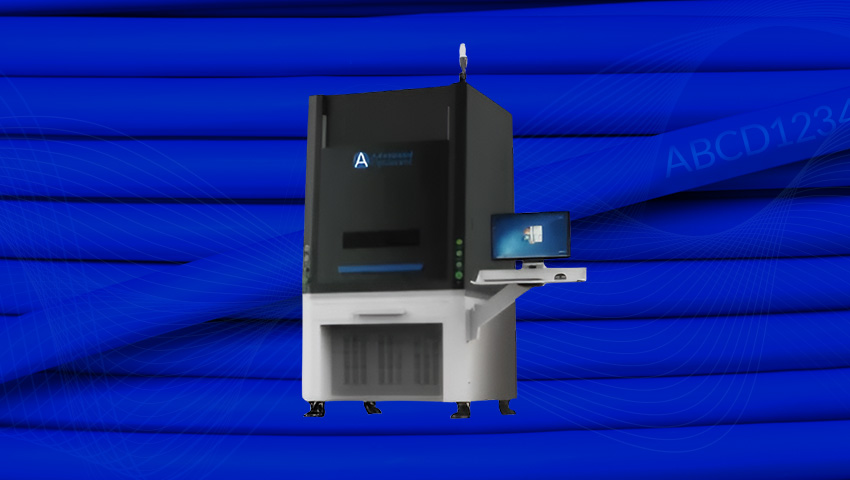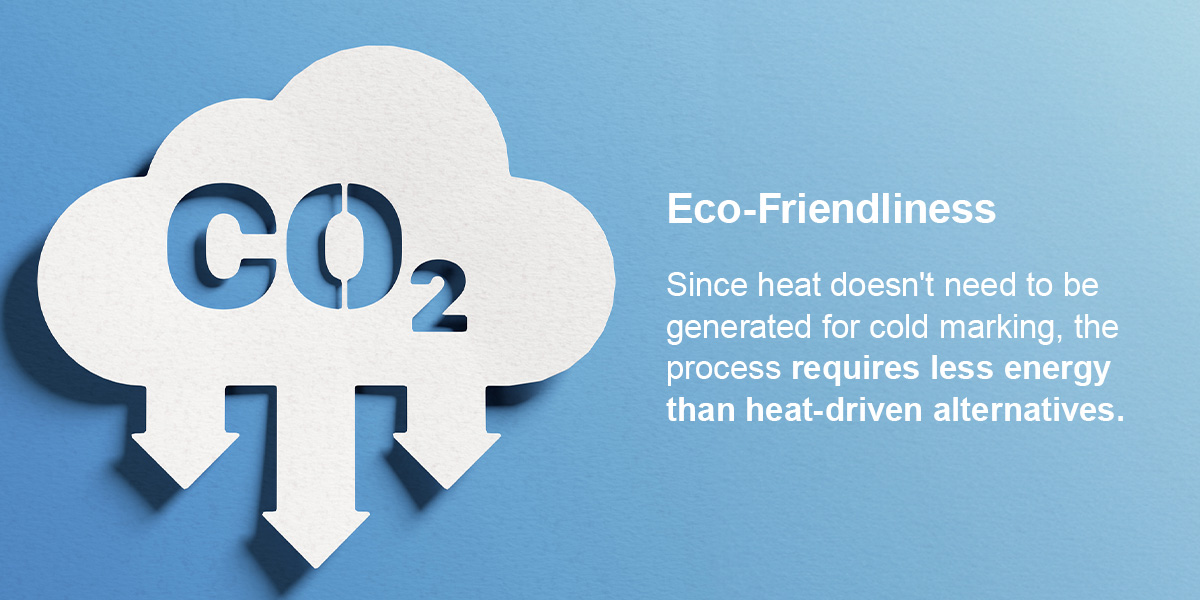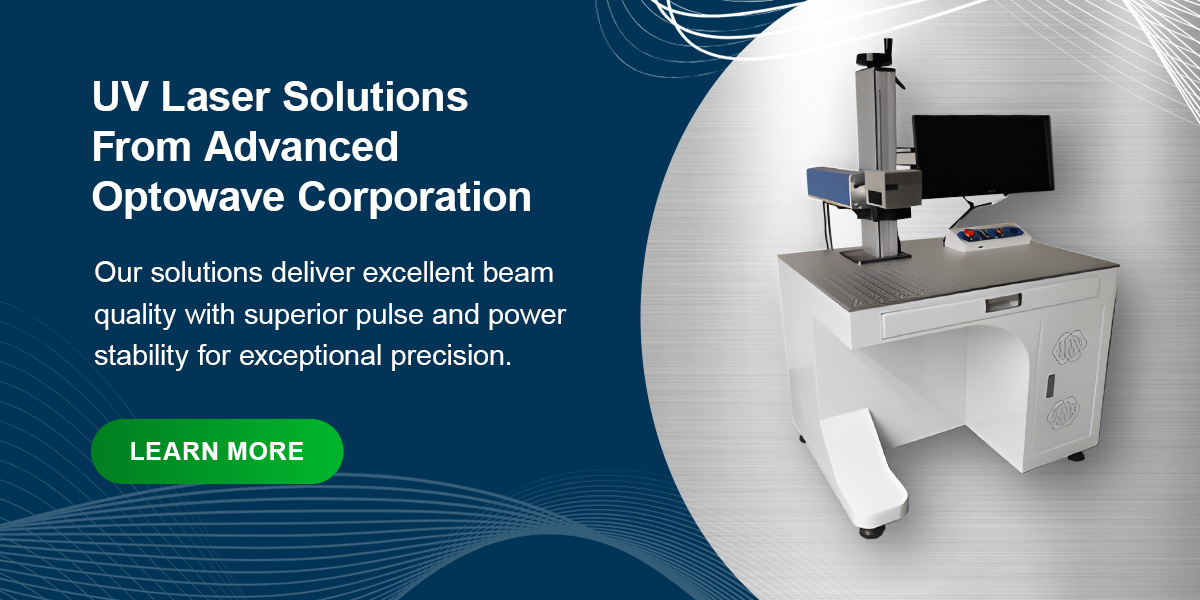

Cold marking has become an increasingly popular process for component marking in manufacturing. Rather than using thermal processing to engrave or etch a material, cold marking creates marks with a photochemical reaction that changes the surface of a substrate. This no-contact, no-heat process delivers numerous benefits for various industries.
Laser marking most commonly uses infrared lasers at 1,064 nm wavelengths, which generate heat to etch or engrave materials. Many manufacturers rely on these laser marking techniques to add identification numbers or barcodes to components or add fine details for product performance. While these traditional lasers are still ideal for many applications, they do have limitations for certain use cases.
Laser marking without heat, also called cold marking or black marking, uses the same concept of traditional laser marking with a different type of light. UV nanosecond lasers can achieve cold marking as well as pico and femtosecond lasers of various wavelengths of light. Cold marking can be achieved on the nanosecond pulse width level using UV lasers. UV light’s wavelength makes the light highly absorbent by many substrates, causing the photochemical reaction that creates the surface mark. The lack of a HAZ also ensures substrates can survive passivation.
While traditional approaches to laser marking have become the preferred method for marking materials, the heat risks lead to use limitations. Cold marking offers all of the benefits of standard laser marking with more advantages and fewer risks.
Manufacturers may switch to cold marking with UV lasers when they see just how advantageous the process is over traditional laser marking.
Unlike traditional laser marking methods, UV lasers do not require cooling time after marking a material. Removing cooling time makes the cold marking process considerably faster, making it ideal for high-volume production environments where efficiency is a top priority. Production lines looking for optimization opportunities may find a switch to cold marking makes a substantial impact on uptime.
In laser marking, laser spot size is proportional to wavelength. A UV laser marker uses a much shorter wavelength than its infrared counterparts, making the focused laser spot much smaller and more capable of precise marking. These precision markings allow users to work within tight tolerances for product designs and enable work on small components such as those common in microelectronic manufacturing.
By cold marking materials, operations overcome one of the most notable risks of traditional laser marking — heat damage. Using infrared or green lasers can lead to various forms of heat stress, such as warping and burning, which can impact the performance of a component. Heat damage may also result in discoloration, which isn’t ideal for applications where appearance is important.
UV laser marking is photochemical, not heat-based, so there is no risk of disrupting material integrity during the marking process.


Since heat doesn’t need to be generated for cold marking, the process requires less energy than heat-driven alternatives. Reduced energy consumption can be a valuable benefit for manufacturing operations implementing more sustainable practices, which has become increasingly common in industrial operations. Cold marking also does not have associated consumables, helping organizations reduce waste.
UV laser marking’s low energy consumption makes it both more sustainable and more cost-effective. Beyond energy savings, UV laser marking has minimal maintenance requirements and doesn’t require consumables. As a result, switching to UV laser marking can lead to considerable cost savings over time.
The lack of heat damage makes cold laser marking highly versatile. This process works well for various plastics, metals, glass and other substrates. Operations that may have been limited before the advent of UV laser marking options now have the ability to create fine details on materials without the risks.
UV laser marking delivers impressive versatility. Materials that would normally have adverse reactions to high heat can easily handle UV marking, leaving the material clearly and precisely marked. Cold marking substrates can include:
With the precision, versatility and efficiency of cold marking, many industries now rely more on UV laser marking than traditional alternatives.
When producing medical devices, manufacturers have two key considerations — sterility and material properties. Product designs in this industry have highly specific functions, and altering the material may affect functionality. Cold marking prevents the heat stress that can change material properties and is entirely non-contact to ensure sterility throughout production.
Structural integrity is essential for aerospace parts, and high heat applied to components may disrupt that integrity. Aerospace manufacturers rely on cold marking to create the precision markings needed for component designs while ensuring excellent performance in rapidly changing environments.
Microelectronics manufacturing demands precision and sensitivity. Cold marking offers the fine detailing capabilities the small components in this industry demand. Without the risk of heat stress, manufacturers can maintain the integrity of sensitive components and reduce the waste that comes with heat-related product damage.
Like the aerospace industry, the automotive sector prioritizes structural integrity to ensure components can withstand high speeds and vibration. Cold marking is just as beneficial in this industry for achieving precision in product designs while maintaining material properties.
Cold marking with UV lasers significantly reduces the risk of cracking glass products and enhances mark quality, which were two common issues for companies using conventional carbon dioxide (CO2) lasers. Today, UV lasers enable retailers to manufacture higher-quality customized glass products at faster cycle times than ever before.
UV laser solutions enable manufacturing operations to leverage the many benefits of cold marking. Advanced Optowave Corporation is a leader in laser solutions development. We are a proven supplier that sells and installs more than 10,000 UV lasers annually, which has earned us the largest market share in the world. We are also the only approved UV laser vendor for the largest consumer electronic manufacturer in the world, which serves as evidence of our excellent record for quality and innovation.
Our dynamic range of products features many laser marking machines, including UV models that support cold marking processes. Our solutions deliver excellent beam quality with superior pulse and power stability for exceptional precision.
Contact our team to learn more about our solutions and find the right UV laser for your applications.

